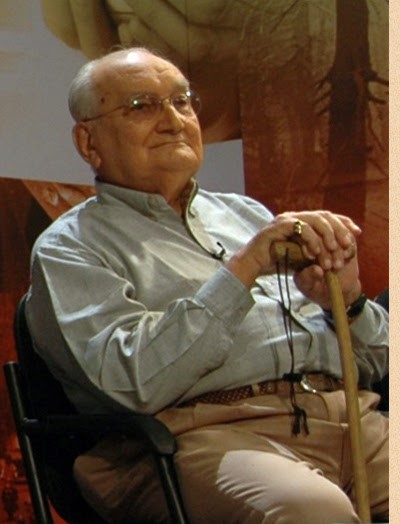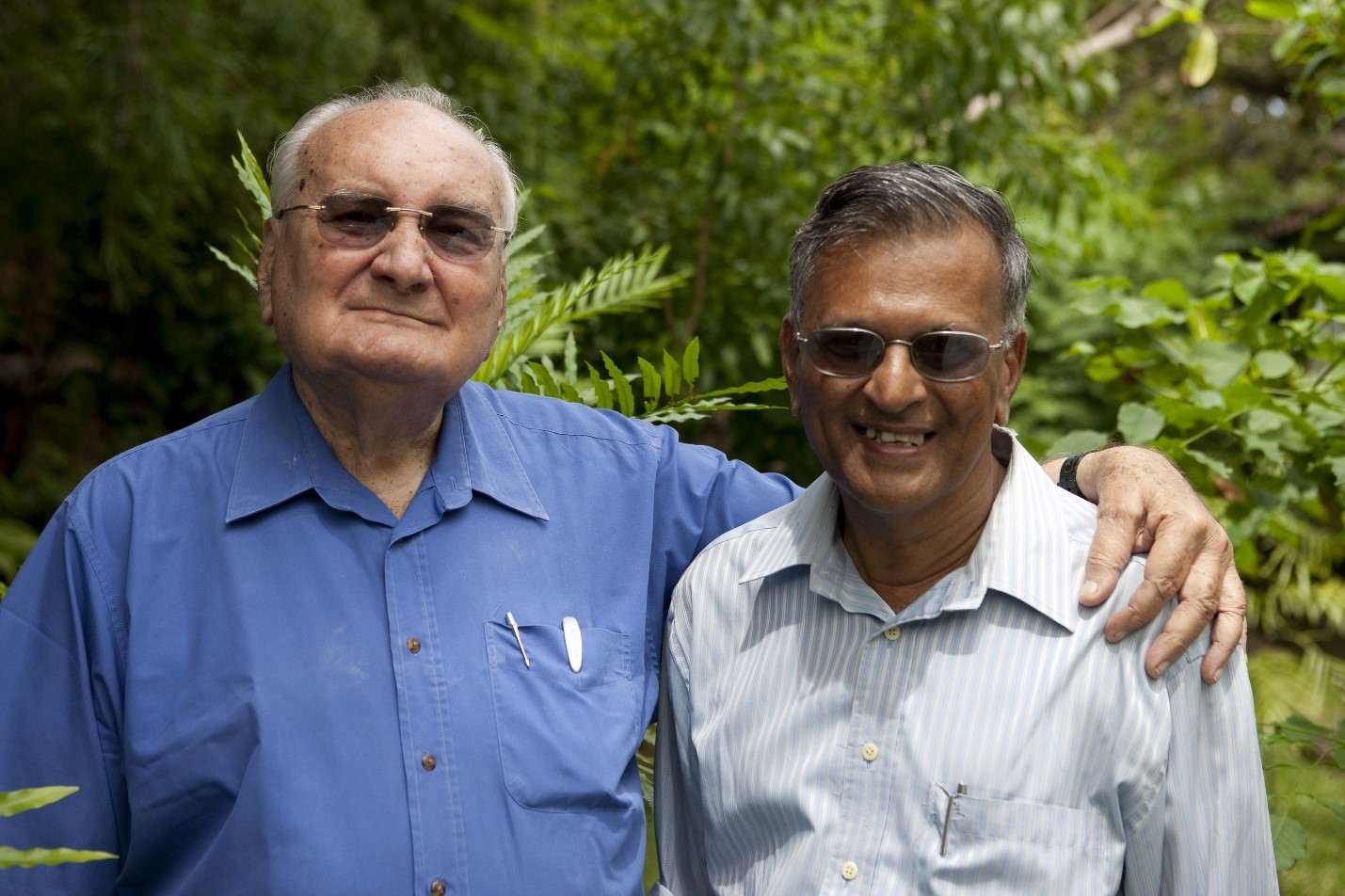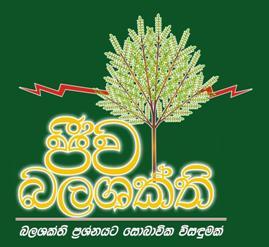VidyaJothi Dr. Ray Wijewardene – Sri Lanka’s Da Vinci. A tribute to a Genius and a True Sri Lankan
http://www.dailymirror.lk/news-features/A-tribute-to-a-Genius-and-a-True-Sri-Lankan-Vidya-Jyothi-Dr-Ray-Wijewardene-Sri-Lankas-Da-Vinci/131-194012

It is ten years since we lost our beloved and revered guru Deshamanya ,VidayaJothi Eng. Dr. Ray Wijewardene. But memories of my association with him over many years is as green as ever. Needless to say that his presence now, when we are at last talking about a revival of the fortunes of Sri Lanka by looking more inwards and getting value of what we have, rather than pining for what we do not have, would have been most valuable. It is indeed Sri Lanka’s loss that has left a great vacuum for me personally, losing my mentor and Guru.
I had the good fortune of getting to know Dr. Ray, at the Agricultural Sectional Committee of the Institution of Engineers of which I was a committee member. This association became that much more intimate when the Bio Energy Association of Sri Lanka (www.bioenergysrilanka.lk) was launched in 2002, by a group of like minded people who had followed his vision, for a sustainable and secure energy future for Sri Lanka. Dr Ray was our founder president and I succeeded him many years later, retaining his services and guidance as our patron. The idea of using Gliricidia as a source of energy was first mooted by Eng. P G Joseph in 1980 in a paper presented at the Institution of Engineers Sri Lanka. Dr Ray was in the audience and was one of the few people present, who had the ability to appreciate the vast potential for Sri Lanka of this proposal, with many spin off benefits. Perhaps, driven by his own close links to this wonder tree which was central to his Sloping Lands Agricultural Technique ( SALT ) concept which won him world accolades. This technique is used for the prevention of erosion of sloping agricultural lands, while using the very technique to add fertility to the lands by the use of Gliricidia which is a well know nitrogen fixing tree. This was publicized long before the world became conscious of the many environmental issues and many of the concepts of the 17 Sustainable Development Goals (SDGs) proposed by the United Nations.
This is one more occasion which highlighted Dr. Ray’s ability to foresee well ahead, the problems that the world in General and Sri Lanka in particular are facing now. His university education in both engineering at the Cambridge University and later in Business in Harvard Business School, no doubt would have make this vision that much inevitable, coupled with his inherent ability of see the wider picture in any situation. This would have been further augmented by the his agricultural engineering knowledge by becoming a Fellow, of the Silsoe College, University of Cranfield, UK . Dr Ray was also instrumental in establishing the Dept of Agricultural Engineering at the Open University with our close colleague Dr. Gamini Kulatunga as the founder Head of Department, and even arranged for the ODA founding required for the department activities and for training of staff at Silsoe College. His ability to relate to the needs of the farmers at the grass root level was quite apparent in his comment that ”A farmer would never accept the advice of anyone who does not depend on such advice for his own livelihood”. As I came to see repeatedly during my association with him, he is the very epitome of the cliché “thinking outside the box”. We discussed at length his belief and expectation that for a country to be truly secure it should be none dependent in the areas of:
• Internal Security
• Food Supply
• Education
• Health and
• Energy
We had long discussions on the possibility of achieving the energy security, which is impossible based on the dependence on imported fossil fuel based sources of energy which Sri Lanka still pursues. Ten years ago the option of solar and wind energy, however tantalizingly attractive, was not financially feasible. However, for us in Sri Lanka the use of Gliricidia, a truly renewable and sustainable and more importantly an indigenous source of firm energy was and still is the most attractive solution. With his education and subsequent career in agricultural engineering and involvement at the highest level in all research institutions of Sri Lanka engaged in major plantations crops, as well as the ever present innovator and inventor’s mind set would, have made the vast potential crystal clear to him. This made his imagination spin faster than any of the propellers on the favorite flying machine he built. True to his style of walking the talk, he immediately set about proving the concept by installing a small gasifier-based power generation unit at his Kohombe coconut estate, renowned as the best yielding coconut plantation in the country with a yield three times the national average. He was proud to point at the sea of Gliricidia trees from the upper verandah of his abode on the estate, which provided not only the fuel for the gasifier-powered electricity generator , but also all the nitrogen fertilizer for his coconuts and the fodder for the cattle on his land. This is the dream he wanted to expand to the whole country which, if picked up by the energy authorities, would have made any further dependence on imported fossil fuels irrelevant by now.
The friendship formed at the IESL created a strong bond between Dr Ray and Eng Joseph and both of them had the perseverance to stick to their guns, in the face of much disbelief and even ridicule by those who professed to be the know all of the energy sector. So much so, one of the senior engineers at the CEB at that time declared to Eng. Joseph that if even one unit of electricity is produced using wood fuels, he would eat his hat. Unfortunately, he did not keep to his promise when the Walapane Dendro Power Plant was commissioned and was producing 24,000 units (kWh) per day feeding the national grid. This was made possible by using Gliricidia grown in the Dadayampola area which adopted the SALT technique assisted by the Ceylon Tobacco Company. The fact that this plant had to be shut down later, not because of lack of fuel wood as many tried to pretend, but due to the willful acts by the energy sector authorities, which did not allow the proper tariff to be paid for the dendro electricity produced.
In reference to the much more fundamental change that the SALT system and planting of Gliricidia created for the micro climate in the Dadayampola area, Dr. Ray was fond of citing a comment by one of the rural farmers when asked about the climate. The following is extracted from one of his articles:
“We asked the farmer how recently the rains had started. He looked at us, puzzled, and then replied “Mahathmaya, me mulu yaayata dhang kisi idoriak nehe.” (Sir, this entire valley does not experience droughts now.) We were truly dumb-founded. It was unbelievable! But the crops grown on this once barren and eroded hill-side were living testimony of the validity this comment”.
Having visited Walapone with Dr. Ray on many occasions, he was sure to point out the areas on the way that the farmer referred to, and the living testimony has even expanded with the passing years.
Dr. Ray is well known as the inventor of the now ubiquitous two-wheel tractor, a common agricultural equipment seen all over the country. True to form, Sri Lanka did not exploit this golden opportunity and we import all our two-wheel tractors. Nor did we exploit his proven expertise as an inventor and innovator in the field of aeronautical engineering. His numerous inventions of fixed-wing and rotary-wing aircraft were a common sight in the Sri Lankan skies, until the deteriorating security situation grounded him as he ruefully admits.
We also used his insights and expertise in the mechanical engineering field to help us in our work at the Haycarb PLC factories. His visits were eagerly awaited by our staff at all levels including the technicians and craftsmen, who enjoyed these interactions conducted in a very cordial and enjoyable manner.

However, I was fortunate to get to move closely with Dr Ray and made many enjoyable and educational visits to his den above the garage at his home on the Dharmapala Mawatha. It would certainly be remiss of me not to mention the most cordial welcome I always received from Mrs. Seela Wijewardene the most gracious lady of the house, who stood beside Dr. Ray at all times as a most solid anchor. I used to joke with her that any other wife would never have allowed Dr. Ray to use up the valuable garden space in the heart of Colombo 7, to grow various fuelwood trees, instead of creating a lush garden of flowers. Thus I came to know of his many other skills and interests including his skill as a painter and a musician. More than all he was a great humorist whose company was most enjoyable with his incisive mind able to see through any pretenders to greatness.
I am recounting these many facets of Dr Ray’s expertise and interests to underscore my claim that Deshamanya, VidyaJothi Dr. Philip Revatha Wiejwardene, Aeronautical Engineer, Aviator, Agricultural Engineer, Agricultural Scientist, Inventor, Innovator par Excellence, Farmer, Artist and above all a great human being, and a patriot, is truly our own Da Vinci. We should not have to wait for centuries or even decades to recognize his greatness and to make practical use of his vision and initiatives to practically demonstrate these, particularly in the field of Dendro Energy and the multiple attributes of Gliricidia, which is a wonder tree by any measure.
I still can see vividly in my mind the poster at the landing of the staircase to his den which says “Pilots Don’t Die ! They pass on to another plane”. I am sure even now he must be looking at us from such an elevated plane, with a wry smile on his face, lamenting to see us forgetting all his advice and still chasing after sources of energy and fertilizer shunned by most of the world, while these are growing in our own backyards.
May Dr Ray, my Guru and Mentor, attain the supreme bliss of Nibbana !
Eng. Parakrma Jayasinghe
Past President
Bio Energy Association of Sri Lanka
See also: Who Speaks for Small Farmers, Earthworms and Cow Dung? – The late Ray Wijewardene in conversation with Nalaka Gunawardene
